 |
1970 - 1979
Tributes For Police And Military K9
Handlers
Note : Some of these tributes are for those that were not line of duty
deaths.



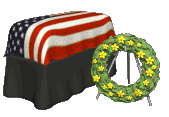
 Flashing
star on both sides of officer name indicates both officer and K9 were
killed in line of duty
Flashing
star on both sides of officer name indicates both officer and K9 were
killed in line of duty

Officer Carl Vance Kime
Jr.
November 5, 1979
- Tulsa, Oklahoma - Age 29
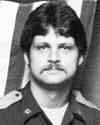
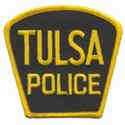
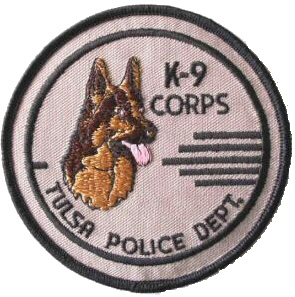
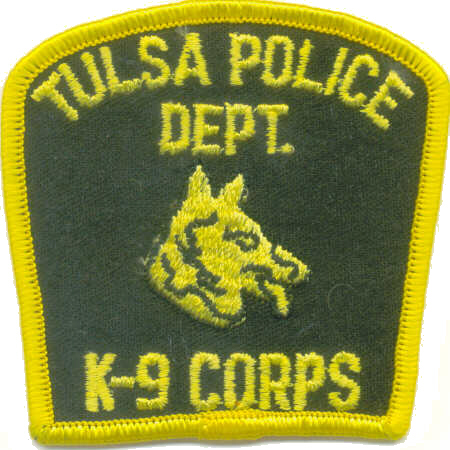
Officer Carl Poncho Kime Jr, 29, was a K-9 officer killed on
November 5, 1979, approximately 2 :00 a.m. while on a routine patrol
when he observed an open door
on the Sooner Insurance Merchandise business at 5710 E. 11th Street.
Officer Kime and his German Shepherd canine partner “Smokey” entered
the open door to search for possible burglars. Retired Oklahoma
Highway Patrol Trooper who served for twenty two years, Herbert Hellen
age 61, was working as a security
guard for the business that night and only minutes earlier had
chased two burglars from the store. Apparently Hellen thought they
were returning when he saw a silhouetted figure at the door of the
office he was in using the telephone. Hellen fired at the figure
with a .12 gauge shotgun loaded with OO buckshot from about 35 feet away.
Eleven of the
twelve .38 caliber pellets hit Officer Kime in the neck and left side of him. Kime
was wearing a vest at the time.
“Smokey” crawled on top of his mortally wounded handler and held
police at bay until other canine officers arrived and were able to
coax him away. On July 13,1979, Officer Kime survived a
shooting when he went into a bar to look for an armed patron at the
Friends Lounge.
When Kime
identified himself as an officer and asked the patron to place his hands
on the bar, a struggle ensued near the front door and shot Officer Kime
in the chest at close range.
Kime's vest he was wearing saved his life. Larry Paul
Goodwin, of that shooting was sentenced to ten years in jail. Kime was
awarded the Medal of Valor and Purple Heart and was suppose to receive
it the day he was accidentally shot and killed by retired Trooper
Herbert Hellen. The medals were presented later to his wife and two
daughters. Officer Kime was
with the Tulsa Police Department in Oklahoma. He is survived by his
wife Kathrine, and two daughters ages 1 and 8.
Retired Oklahoma Highway Patrol Trooper, Herbert Hellen, was not
charged in the killing of Officer Kime.
 Officer Buford Dedeaux
June 8, 1979
- Gulfport, Mississippi - Age 34
Officer Buford Dedeaux
June 8, 1979
- Gulfport, Mississippi - Age 34
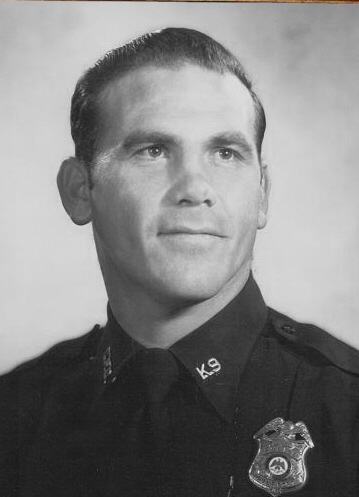
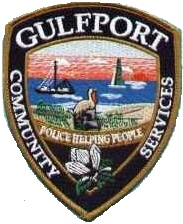 Officer Buford Dedeaux was shot and killed on June 8,
1979, at approximately 12:44 a.m., when he stopped to investigate a
suspicious individual riding a bicycle near Yeager's Grocery Store
on 25th Avenue north of 34th Street in Gulfport. After asking the
individual to empty a small bag he was carrying, the individual,
produced a .25 caliber handgun and shot Officer Dedeaux twice. After
being shot Dedeaux requested assistance by radio but died shortly
after the arrival of
assisting
officers.
The suspect had run away from the shooting scene.
When the first policeman arrived he found Dedeaux lying mortally
wounded on the driver's side of his police car front seat of the
patrol car mortally wounded.
The lights of the police car were not on and Dedeaux expired without
regaining consciousness. At the scene, the following evidentiary
items were found: a yellow bicycle with a crescent wrench and key
wired to the handlebars, pullover hat on the hood of the police car,
a green ditty bag, several spent .22 calibre cartridge casings and
Dedeaux' service revolver. At the request of police officials, a
picture of the bicycle found at the scene was displayed on local
television. In response to it, Jimmy Moore contacted Officer Smith
at about 1:30 p.m., June 8, 1979. Smith was informed by Moore that
he and Cyril Lindsey, a companion, had been watching television and
recognized the bicycle as that of Arthur Ray Lanier, age 40. Moore
explained that he and Lindsey worked at the same company with Lanier
and saw him ride the bicycle to work on Thursday morning, June 7.
Moore and Lindsey were brought to the police station and identified
the bicycle as that of Lanier.
Moore
and Lindsey also stated they had observed Lanier carrying the ditty
bag and wearing the pull over hat. These identifications linked
Lanier to the homicide.
Arthur Ray Lanier
was arrested
approximately 5:00 p.m. the same day at his grandmother's residence
in north Gulfport by Officer Prentiss Smith. Approximately 1:10 a.m.
on Sunday, June 10, 1979, he made a videotaped statement in which he
admitted shooting Dedeaux. Following this statement, Lanier assisted
the officers in locating the gun he had thrown away. Lanier stated
that while riding his bicycle, he was stopped by Officer Dedeaux and
directed to empty the ditty bag. In complying Lanier removed a
pistol from the bag and Dedeaux drew his gun and fired at him. He
stated that he fired at Dedeaux while running backwards but was not
sure if any of the shots had actually struck Dedeaux, who entered
the patrol car and radioed for help.
Lanier then stated that he threw the gun
away and returned to his grandmother's home.
Officer Dedeaux is survived by his wife and two sons.
Officer Buford Dedeaux was shot and killed on June 8,
1979, at approximately 12:44 a.m., when he stopped to investigate a
suspicious individual riding a bicycle near Yeager's Grocery Store
on 25th Avenue north of 34th Street in Gulfport. After asking the
individual to empty a small bag he was carrying, the individual,
produced a .25 caliber handgun and shot Officer Dedeaux twice. After
being shot Dedeaux requested assistance by radio but died shortly
after the arrival of
assisting
officers.
The suspect had run away from the shooting scene.
When the first policeman arrived he found Dedeaux lying mortally
wounded on the driver's side of his police car front seat of the
patrol car mortally wounded.
The lights of the police car were not on and Dedeaux expired without
regaining consciousness. At the scene, the following evidentiary
items were found: a yellow bicycle with a crescent wrench and key
wired to the handlebars, pullover hat on the hood of the police car,
a green ditty bag, several spent .22 calibre cartridge casings and
Dedeaux' service revolver. At the request of police officials, a
picture of the bicycle found at the scene was displayed on local
television. In response to it, Jimmy Moore contacted Officer Smith
at about 1:30 p.m., June 8, 1979. Smith was informed by Moore that
he and Cyril Lindsey, a companion, had been watching television and
recognized the bicycle as that of Arthur Ray Lanier, age 40. Moore
explained that he and Lindsey worked at the same company with Lanier
and saw him ride the bicycle to work on Thursday morning, June 7.
Moore and Lindsey were brought to the police station and identified
the bicycle as that of Lanier.
Moore
and Lindsey also stated they had observed Lanier carrying the ditty
bag and wearing the pull over hat. These identifications linked
Lanier to the homicide.
Arthur Ray Lanier
was arrested
approximately 5:00 p.m. the same day at his grandmother's residence
in north Gulfport by Officer Prentiss Smith. Approximately 1:10 a.m.
on Sunday, June 10, 1979, he made a videotaped statement in which he
admitted shooting Dedeaux. Following this statement, Lanier assisted
the officers in locating the gun he had thrown away. Lanier stated
that while riding his bicycle, he was stopped by Officer Dedeaux and
directed to empty the ditty bag. In complying Lanier removed a
pistol from the bag and Dedeaux drew his gun and fired at him. He
stated that he fired at Dedeaux while running backwards but was not
sure if any of the shots had actually struck Dedeaux, who entered
the patrol car and radioed for help.
Lanier then stated that he threw the gun
away and returned to his grandmother's home.
Officer Dedeaux is survived by his wife and two sons.
Arthur Ray Lanier,
on June 12, 1985 , from his
third trial for the murder of
Buford Dedeaux,
was found guilty of capital murder in the First Judicial District of the
Harrison County Circuit Court. In 1990 Arthur Lanier was granted a
fourth trial by the
Mississippi Supreme
Court because the Justices ruled unanimously that the judge who presided
over the 1985 trial, then-Circuit Court Judge J. Ruble Griffin, gave a
faulty jury instruction that unfairly limited Lanier's chances of
conviction on the lesser charge of manslaughter. On September 16, 1998,
nineteen years after the killing officer Dedeaux,
Lanier's attorneys reached an
agreement with prosecutors calling for the charge against Lanier to be
reduced from capital murder to murder, Lanier pleaded guilty in front of
Circuit Court Judge Jerry O. Terry. Lanier was sentenced to life in
prison without parole.

 Deputy Sheriff
David G. Livengood Deputy Sheriff
David G. Livengood
 January 18, 1979 -
Garrett County, Maryland - Age 31
January 18, 1979 -
Garrett County, Maryland - Age 31
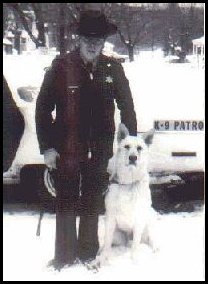
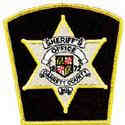
The first line of duty death of a Garrett County Officer occurred at approximately 5:30 am on
January 18, 1979. Deputy Sheriff David G. Livengood, 31, was approximately one mile away when a silent alarm at
Davidson’s store in Oakland, Maryland was tripped at 5:25 a.m. The first officer arrived at the scene at approximately
5:27 a.m. and found the padlock and chains broken off the front door. At approximately 5:26 a.m. Livengood arrived
on scene at the back of the store. At approximately 5:30 he radioed the officer at the front of the store that he
was going to check a suspicious vehicle in the back. That was the last they heard from Livengood. Deputy Livengood
had confronted the suspects near the back entrance carrying stolen property. While in the process of apprehending
the two men, Livengood was shot 7 times with a 9 mm, once to the back of the head by Richard Danny Tichnell. The
other intruder, Roberto Recek used a samurai sword to then kill Deputy Livengood’s K-9 “Sarge” who was found by
the other officer lying up against a barbwire fence still alive but lifted his head and then died. Deputy Livengood
was killed by two perpetrators who fled and then a short time later accosted a family, tied them up and stole their
vehicle. Later that day both suspects, Roberto Rezek and Richard Danny Tichnell were apprehended and taken into
custody by the Virginia State Police. Deputy Livengood had
been with the Garrett County agency in Maryland for eight years and was a Marine Corps veteran. Deputy Livengood
is survived by his wife Geni, his daughter Shannon and his son David.
Rezek was tried and convicted of murder and sentenced to life imprisonment.
Tichnell was convicted and sentenced to death which was later commuted
to life in prison.
 Ofc. Nelson I Hess V
June 12, 1978 -
Chattanooga, Tennessee - Age 35
Ofc. Nelson I Hess V
June 12, 1978 -
Chattanooga, Tennessee - Age 35
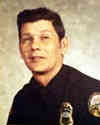
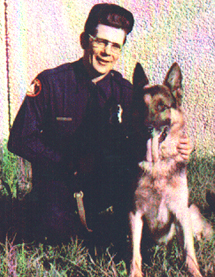
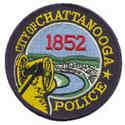
K-9
Officer Hess, 35, and Officer David Friederichsen were shot and
killed on June 12, 1978 after responding to a domestic disturbance
call. Two minutes after arriving on the scene the suspect opened
fire, striking them both. Officer Hess was killed at the scene and
Officer Friederichsen was succumbed to his injuries at a local
hospital three days later. Officer Hess had been with the
Chattanooga Police Department in Tennessee for six years. He is
survived by his wife and son.
 Officer Louis Pena
April 2, 1978 - Coral
Gables, Florida - Age 41
Officer Louis Pena
April 2, 1978 - Coral
Gables, Florida - Age 41
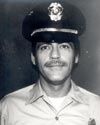
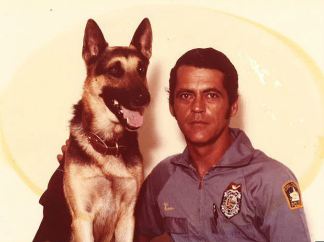
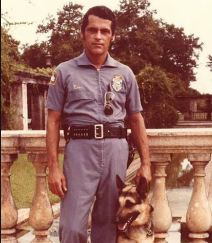
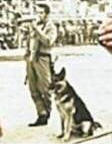 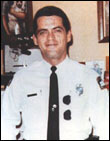
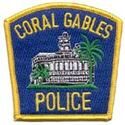
Officer Pena , 41, was shot in the neck and killed on April 2,
1978 when he stopped Manuel Valle, 27, for a traffic violation at Le Jeune Road and Miracle Mile for running a red light
shortly after 7:00 p.m. Valle
was also driving a stolen Camero which was not known at the time and
was with ,
Felix Ruiz.
Though Valle was driving
a stolen Camaro, the car didn't register as stolen when Pena called
it in to dispatch. Pena would most likely have let Valle go with a
ticket.
The events
that followed were witnessed by Officer Gary Spell also of Coral
Gables Police Department. Officer Spell testified that when he
arrived at the scene Manuel Valle was sitting in the patrol car
with Officer Pena. Spell heard Pena use his radio to run a
license check on the car Valle was driving.
Valle was allowed
to go back to his vehicle because he said he needed a cigarette but
instead he grabbed a gun.
Officer Spell said
Valle
approached Officer Pena and fired a single shot hitting Officer
Pena in the neck which resulted in his death. Valle also fired
two shots at Officer Spell hitting him in the back and Valle
then fled. Officer Spell was wearing his bullet-proof vest
which probably saved his life.
Valle, fearing a
trip to prison, pulled a gun and shot Pena at point-blank range with
a 38 cal. On
the police dispatch call, Pena can be heard saying "I'm shot" three
times, along with the frenzied barking of his K-9 dog in the back
seat.
Valle was picked up 2 days later in Deerfield
Beach when Officer Rodriguez spotted him along side of the road
and matched him with a picture he had with him and arrested him. When
he was arrested he was carrying a bag of clothing and a 38 caliber
revolver. He was charged with first degree murder, attempted
murder and possession of a firearm by a convicted felon and
automobile theft. During the trial, evidence was shown
that Valle's fingerprints were on both vehicles. His K-9 partner "Abraham"
was with him at the time of the incident. Officer Pena was the father of
4 children and 11-year veteran of the force. He is survived by
his wife Inez, his son Louis Paul Pena 19, Jeneane 13 and two other
children.
Codefendant Felix Ruiz, was also charged as an accessory after
the fact and sentenced to 10 years imprisonment on 6/20/78.
On June 4, 1978, Manuel was arrested. On June 13, 1978 he was
indicted on, First-Degree Murder, Attempted First Degree
Murder, Possession of a Firearm / Convicted Felon, and Grand
Theft Auto. On April 14, 1978
Valle was
arraigned by the trial court of Dade County, 11th Circuit. The
defendant stood mute, entering no plea. Valle later pled guilty to
Grand Theft Auto, for which he was sentenced to five years’
imprisonment.
On 5/10/78 the
jury found the Valle guilty and received death sentence for First
Degree Murder, 30 years for Attempted First Degree Murder and 15
years for Possession of a Firearm/ Convicted Felon.
On 7/7/78 an appeal was filed and on 2/26/81
The Florida Supreme
Court reversed Valle’s convictions and sentence and remanded for a
new trial.
On 7/31/81, during his
second trial, Valle was convicted on all counts charged in the
indictment. On 8/1/81 the jury, by a 9 to 3 majority,
voted for the death penalty. On 8/4/81 Valle was sentenced to death
for First Degree Murder, 30 years for Attempted First Degree Murder
and 5 years for Possession of a Firearm/ Convicted Felon.
On 9/23/81 an appeal was filed and on 7/11/85 the court
affirmed the convictions
and sentence of death and on 9/17/85 a rehearing was denied.
Valle filed a Direct Appeal in the Florida Supreme Court arguing
that his confession should have been suppressed because it was
obtained in violation of his Miranda rights, that the trial court
erred in allowing under-representation of minorities in the jury
selection and that a mistrial should have been granted when the
prosecutor for the State prejudicially commented on Valle’s right to
remain silent. Regarding the penalty phase of the trial, Valle
contended that the trial judge erred in excusing a prospective juror
for cause and that the court erred in allowing the prosecutor for
the State to make improper comments during closing arguments. Valle
also challenged the instruction, consideration, and application of
aggravating and mitigating circumstances in his case. Specifically,
Valle argued that the trial court erred in omitting mitigating
evidence that he would be a model prisoner if spared the death
penalty. On
12/6/85 a petition was filed
and on 5/5/86 a
Certiorari was granted
in light of Skipper v. South Carolina, regarding the admissibility
of model prisoner testimony.
On 1/5/87 the Florida Supreme
Court remanded for resentencing before a new jury and
reversed the death
sentence. On remand from the United States Supreme Court, the
Florida Supreme Court found that testimony regarding Valle’s
potential future behavior as a model prisoner should have been
considered by the jury during the penalty phase of the trial. As
such, the Florida Supreme Court remanded for resentencing before a
new jury on 01/05/87.
On 2/29/88 The jury, by an 8 to 4
majority, voted for the death penalty. On 3/16/88 Valle was
resentenced
death for First Degree Murder, 30 years for Attempted First Degree
Murder and 5 years for Possession of a Firearm/ Convicted Felon.
Valle filed a Direct Appeal in the Florida Supreme Court. In that
appeal, he argued the improper cross-examination of defense experts
who were testifying as to Valle’s prison behavior. The defense’s
presentation of Skipper testimony regarding the admissibility of
model prison behavior, gave the prosecution the opportunity to
scrutinize Valle’s prison behavior on cross-examination. Valle also
challenged the application of the aggravating factor that the victim
was a law enforcement officer engaged in his official duties and the
application of the cold, calculated, and premeditated
aggravating factor. He also argued that the prosecutor improperly
presented victim impact evidence. On 4/27/88 an appeal was filed. On
5/2/91 the court affirmed the convictions and sentence of death. On
7/5/91 a rehearing was denied. On 8/5/91 a mandate was issued. On
10/1/91 a petition was filed and was denied on 12/2/91. Valle
claimed he received ineffective assistance of counsel. Valle argued
that his counsel was ineffective for failing to move for the
disqualification of his resentencing judge. Judge Norman Gerstein
allegedly kissed the victim’s widow in an offer of sympathy and
fraternized with the victim’s friends in front of the jury. Valle
also contended that his counsel was ineffective for presenting
Skipper evidence during his resentencing proceedings, which allowed
the State to bring up that Valle had attempted an escape from prison
between the time his death sentence was reversed and the
resentencing. Valle claimed that his counsel erroneously presented
the Skipper evidence because they thought they had to, since his
earlier sentence reversal was based on the exclusion of such
evidence. Valle contended that without the defense’s presentation
of the Skipper evidence, the State would have been unable to present
rebuttal evidence of his escape attempt, and the jury may not have
recommended death. The Florida Supreme Court affirmed the denial of
Valle’s 3.850 Motion in part, reversed the denial in part, and
remanded to the State Circuit Court for an evidentiary hearing on
Valle’s claims of ineffective assistance of counsel.On 4/5/93 a
motion was filed and on 8/19/93 the motion dismissed without
prejudice in order to file a legally sufficient motion. On 12/1/93 a
motion was filed and denied on 8/31/94. On 6/7/96 an appeal
was filed and on 12/11/97 the court affirmed in part, reversed in
part, and remanded Valle’s motion to the trial court for an
evidentiary hearing regarding Valle’s claim of ineffective
assistance of counsel. On 12/11/97 the court remanded the motion for
an evidentiary hearing regarding Valle’s claim of ineffective
assistance of counsel. On 10/19/98 the motion was denied. On 1/25/99
an appeal was filed. On 1/18/01 the court affirmed the denial of
Valle’s Motion. On 3/12/01 a rehearing was denied and on 4/17/01 a
mandate was issued. On 12 31/01 a petition was filed and denied on
8/29/02 and on 11/12/02 a rehearing was denied. On 2/19/03 a
petition was filed and denied on 6/24/03 and on 10/15/03 a rehearing
was denied. On 2/21/03 a petition was filed and denied on 9/13/05.
Another petition was filed on 1/13/04 and denied on 3/29/04 On
10/11/05 an appeal was filed and on 8/11/06 the court affirmed the
denial of the petition. On 2/27/07 a mandate was issued. On 7/16/07
a petition was filed and denied on 10/1/07.
While in prision Valle
on 10/14/80 destroyed state property, On 12/14/80 received 30 days
for disobeying an order. On 2/8/83 disorderly conduct. On 5/7/83
disorderly conduct. On 7/18/84 received 90 days for attempting
escape. On 11/12/84 received 15 days for possession of
negotiables. On 6/10/86 he received 15 days for disorderly conduct.
On 1/13/87 received 180 days for
possession of
escape
paraphernalia.
On 11/17/90 received 15 days for misuse of state property.
On June 30, 2011,
Governor Rick Scott signed his first death warrant and Valle is set to be
executed by lethal injection on 8/2/11 at 6 p.m. at Florida State
Prison in Starke. On July 25, 2011, The Florida Supreme Court
stayed Manuel Valle's execution until Sept. 1, 2011 so a judge can hear
arguments over the use of a new lethal injection drug. In a 4-3
decision, the court decided that a judge will have to hear evidence
on whether the new lethal injection drug the state is using in
Valle's execution is acceptable. Florida last month adopted a new
procedure that substitutes pentobarbital. Valle's lawyers contend
the new drug's use will subject him to "substantial risk of harm."
Florida and several other states have been forced to seek
alternatives to sodium thiopental, part of a three-drug cocktail
used in lethal injections. The new sedative drug, pentobarbital, has
already been used for executions in four other states, although it
hasn't been used in a Florida execution yet. The drug has been
unavailable after the only seller in the country, Hospira, stopped
manufacturing it due to concerns about its use in lethal injections.
On August 23, 2011, the Florida Supreme Court approved the state’s
new lethal injection drug cocktail and the next day an execution
date for Manuel Valle was set for Sept. 6, 2011. On Sept. 2, 2011,
he received a second temporary stay of execution.
Manuel Valle's execution, originally set for 6 p.m. on 9/6/11 was
delayed by the U.S. Court of Appeals for the Eleventh Circuit in
Atlanta until at least 7 p.m. on 9/8/11. Valle's lawyers were
ordered by the appeals court to submit written arguments regarding
claims Valle was denied a clemency hearing. Valle's lawyers
previously filed documents saying the state began a clemency
proceeding in 1992, but never followed through with an investigation
of the case or assigned Valle a clemency lawyer. A new date was
given for the execution to take place September 28, 2011 at 4:00
p.m. On that date,
twenty-six minutes before Valle was going to be executed, Department
of Corrections spokeswoman Gretl Plessinger announced a delay which
turned into three hours. At 6:55 p.m. an announcement was made that
the execution would take place. Thirty people filed into the
execution chamber gallery. The first two rows were 16 Pena family
members. Six media witnesses were in the fourth row. The rest were
corrections officers or state officials. At 6:58 p.m., team warden
Timothy Cannon asked Valle if he had anything to say. "No, I
don't,'' Valle said. The drugs were then started for the execution
and a doctor came into the room with a stethoscope and pronounced
Valle dead 7:14 p.m. The curtain closed at 7:15 p.m. Family members
filed out of the gallery at 7:16 p.m.
Valle ate a final dinner
of fried chicken breast, white rice, garlic toast, peach cobbler and
a Coca-Cola. Valle was the first Florida prisoner executed using a
new lethal mix of drugs.
Louis Pena's wife, Inez Afanador, 73, did not attend
the execution because she was recovering from back surgery. Manuel
Valle was the first person in the U.S. executed for killing a K9
officer.
 Trooper Richard F.
Champy
February 3, 1978 -
New Hampshire State Police - Age 32
Trooper Richard F.
Champy
February 3, 1978 -
New Hampshire State Police - Age 32
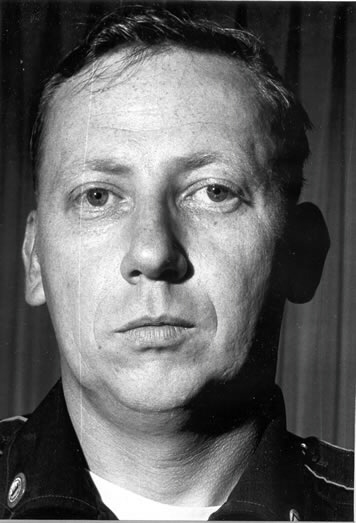
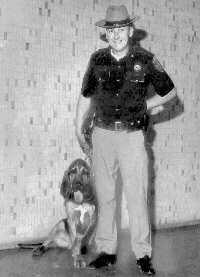

On February 3, 1978, Trooper
Champy, 32, heard a call for assistance at 5:30 p.m. of a motorist whose car had been
struck by a hit and run motorist and forced a vehicle off the road near
Lebanon. Trooper Champy, along with fellow Trooper
Korbett pursued the fleeing vehicle and eventually stopped it at exit 10. During a
struggle to arrest the passenger of the vehicle Trooper Champy suffered
a heart attack. Another trooper arrived and performed CPR on him and he
was rushed to Lew London Hospital where he died at 7:30 p.m. Trooper Champy was an eight-year veteran of the
New Hampshire State Police and was stationed at Troop D in Bow. His K9
partner was a bloodhound named “Smokey”. Trooper Champy served in the
United States Navy in the Vietnam War. He was survived by his wife and
his two daughters ages 6 & 7.
Police charged two strafford
men in the incident. Mark D. Avery, 21, a passenger, was charged with
resisting arrest and intoxication. The driver Dean Homer Kendall, 41,
was charged with driving while intoxicated and leaving the scene of an
accident.

Robert Gray
January 6, 1978 -
Clark Air Base, Philippines - Age 22
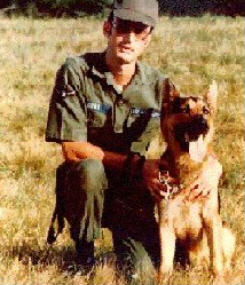
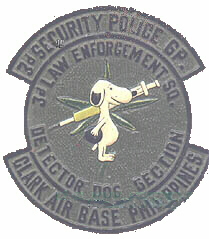
Robert
Gray was killed at Clark Air Base in the Philippines on January 6, 1978.
Robert was killed when he had been dispatched to an intruder sighting
and was searching a
mile range which had scrub and elephant grass and some washouts. Robert
didn’t wait for backup, he trusted his dog Casey Jones. Casey Jones was
a great detector dog but not much of an attack dog. As Robert spotted
and chased the intruders through the grass two of them ducked down into
the high grass and waited as Bob ran by, still in pursuit of the others.
Bob released Casey Jones and he actually had a bite on the foot of one
of the two intruders still ahead of them. The two who had waited in the
grass jumped Robert from behind after he cut Casey Jones loose. Robert
was struck in the head and was stabbed in the neck and cut into his ribs
and lungs from his waist to under his armpit by four intruders who got
his gun and shot Robert’s loyal dog, Casey Jones as the loyal dog was
returning to his stricken master. The intruders fled leaving Robert and
Casey Jones lying on the ground. Casey Jones underwent surgery and
survived to be assigned to another handler later. The intruders got
away. On March 12, 2004, Lackland Air Force Base 341st training squadron
had a kennel dedication ceremony in honor of Robert Gray which was
attended by his parents and brother. Robert Gray was buried at Oakwood
Cemetery in Troy, NY. on January 18, 1978.
 Trooper Carl P.
Moller
February 13, 1976 -
Connecticut State Police - Age 31
Trooper Carl P.
Moller
February 13, 1976 -
Connecticut State Police - Age 31


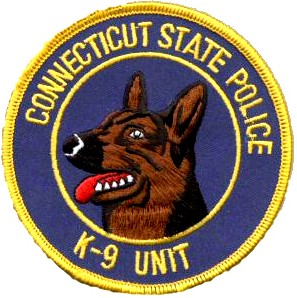
Trooper Moller, 31, of Bristol,
Connecticut was struck and killed on February 13, 1976
(Friday the 13th ) along with the motorist he was assisting on I-84
roadway in West Hartford by a hit-and-run driver in a truck. Trooper
Moller had just finished his work week
and was on his way home when he stopped to assist a motorist on I-84 in
West Hartford. While on the roadway, Moller and the motorist were struck
and both killed by a truck. The truck driver left both men on the
highway and fled the scene. He drove into downtown Hartford and told a
Hartford police officer that he thought he hit something. He was
arrested and charged with two counts of negligent homicide. Moller, who
was a Vietnam veteran, was assigned to Hartford following his graduation
from the Academy in February 1970 and spent his entire career at Troop
H. He was also a canine handler, teaming up with his dog, Thor.
Trooper Moller had served with the Connecticut State Police
for 6 years.
The man was charged with two counts of negligent homicide.
 Ptl. James Kenneth
Armstrong
April 15, 1975
- Bensalem, Pennsylvania - Age 28
Ptl. James Kenneth
Armstrong
April 15, 1975
- Bensalem, Pennsylvania - Age 28
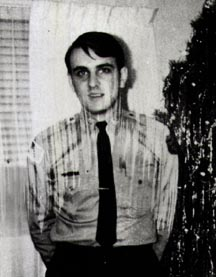

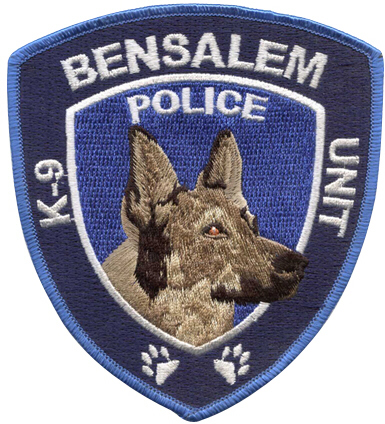
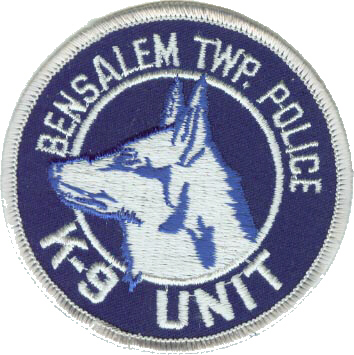
Ptl. Armstrong, 28, was killed on April 15, 1975. in Bensalem PA.
Ptl. Armstrong was shot while on a felony traffic stop of armed
robbery suspect at Woodhaven Mall and his K-9 "Shep" was also shot by the suspect
and survived.
K-9-Shep who was in the
backseat of the patrol car with the window only partway down could not
get out.
At approximately 11:00 a.m. Officer Armstrong approached Joseph
Hennessey in a parking lot of
Colorcraft Company
on route 13 in Bensalem Township to question
him about a gas station robbery fifteen minutes earlier. Hennessey was
driving a Chevrolet station wagon that fit the general description of
the robbery suspect. During the interaction with Officer Armstrong,
Hennessey disarmed him and chased him through a parking lot and shot him
five times, three times in the chest, once in the mouth & once in the
head. Hennessey fled jurisdiction to Philadelphia with a female
and admitted to her he committed the robbery and murdered Officer
Armstrong and was arrested. The female with him witnessed Hennessey
heavily intoxicated from drugs and/ or alcohol in the days before and
after the murder. Officer Armstrong’s tie tack was found under
Hennessey’s car seat. Officer Armstrong's K9 "Shep" returned to
duty some time after. At the time of his
death, he left behind his wife and one year old daughter Sandra and
Patti.
On September 30, 1975, following a trial, a jury found Hennessey
guilty of 1st degree murder of Bensalem Township Police
Officer James Armstrong. The following day the jury sentenced Hennessey
to life in prison.
 Cpl. Brian Criddle
July 22, 1973 - Northern
Ireland, - Age 34
Cpl. Brian Criddle
July 22, 1973 - Northern
Ireland, - Age 34
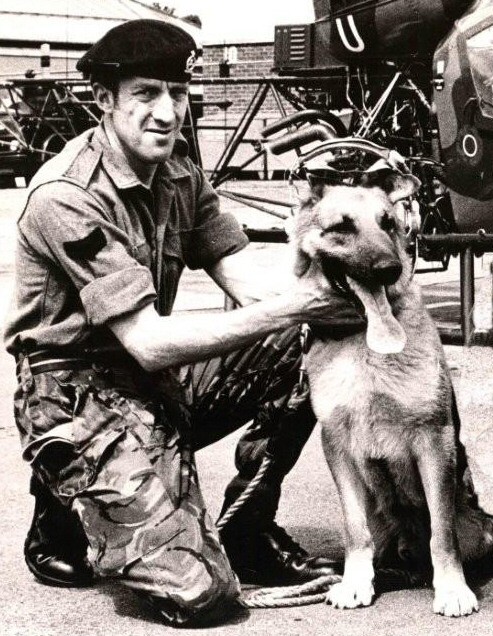
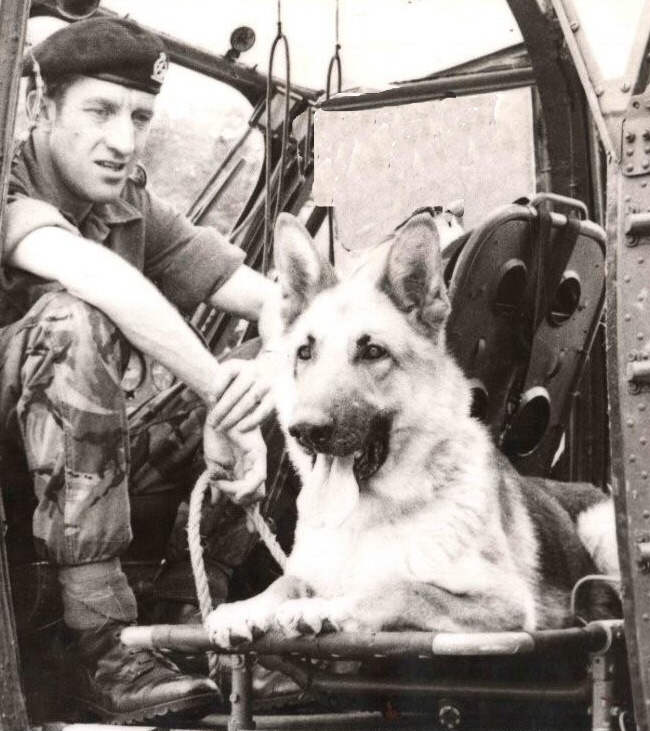
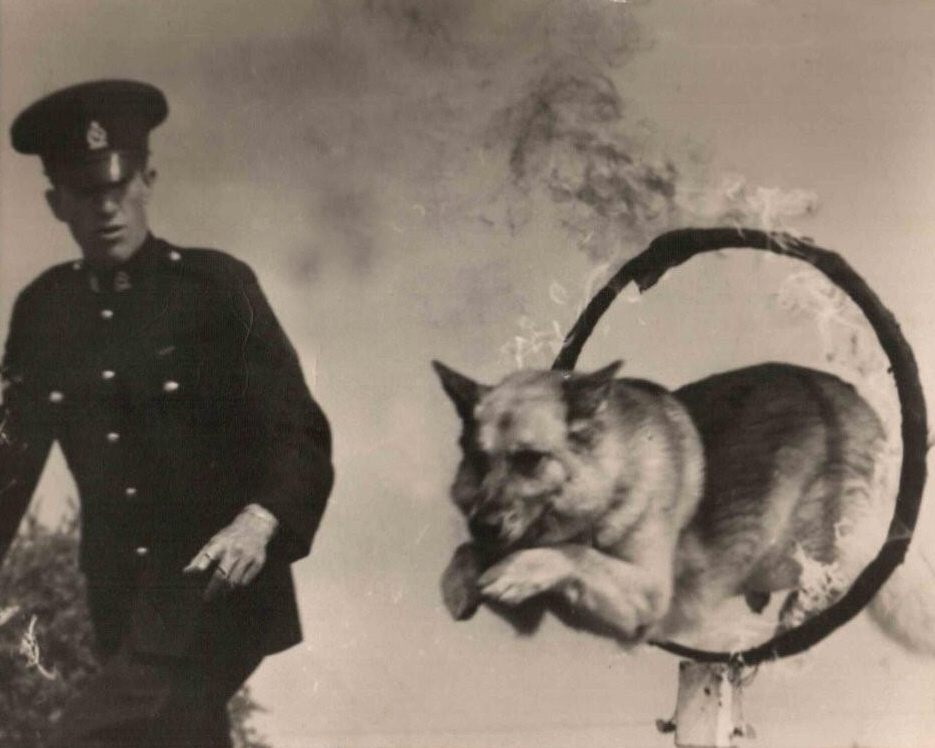
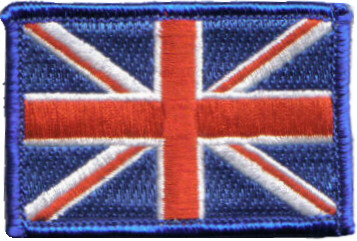
Cpl
Brian Criddle, 34, and his dog Jason were critically injured when a
landmine exploded near Clogher on July 18th 1973. Brian was with C Sqn
doing road clearance almost on the border.
He had been working his
sniffer dog and had seen a milk churn in a field and on going to examine
it the bomb it contained was detonated by remote control. His german
shepherd dog was blown 30 feet away however Jason survived.
The bomb was found to
have been made up of 3 milk churns containing a total of approx 700 lbs
of explosives.
Only part of the bomb exploded, if the
whole thing detonated it would have killed between 15 - 20 soldiers. Brian
died in hospital four days later on July 22, 1973 in Belfast. He was
married with 3 children.
Brian had been awarded the British Empire Medal for his brave and
gallant services.
Cpl. Brian Criddle is
survived by his wife Julia, Sarah 2, and a set of twin sons Glenn and
Gary age 8 months old.
 Sgt. Edwin C. Hosli
Sr.
March 5, 1973 - New
Orleans, Louisiana - Age 31
Sgt. Edwin C. Hosli
Sr.
March 5, 1973 - New
Orleans, Louisiana - Age 31
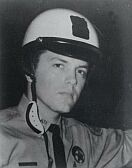
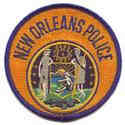
Sergeant Hosli, 31, succumbed to wounds on March 5, 1973, 58 days after he
was shot by a sniper who was also responsible for the murders of
Cadet Alfred Harrell on December 31, 1972, and Deputy Superintendent
Louis Sirgo & Patrolman Paul Persigo, and Patrolman Philip Coleman
on January 7, 1973. Minutes after the murder of Patrolman Harrell,
Sergeant Hosli and his canine partner responded to nearby warehouses
after an alarm went off. He was ambushed and shot in the back with a
44 magnum rifle by the sniper as he entered one of the warehouses.
After Sgt Hosli was shot, police chased Mark Essex in a stolen car to
a Howard Johnson’s. The sniper then set diversionary fires
throughout the 300 room hotel and shot at hundreds of police
surrounding the burning building. Sgt. Hosli was one of nine people
killed and 10 seriously wounded by self-styled black extremist Mark
James Robert Essex, age 23 from Emporia Kansas, who held hundreds of
cops at bay for 10 hours, paralyzing the Central Business District. Sgt. Hosli served the New Orleans Police Department in Louisiana. Other
police officers killed by sniper Mark Essex. Sergeant Edwin C.
Hosli Sr., age 31, was shot on January 7, 1973 and succumbed to his
wound on March 5, 1973, 58 days after he was shot by a sniper.
Sergeant Hosli and his canine partner responded to nearby warehouses
after an alarm went off. He was ambushed and shot in the back with a
44 magnum rifle by the sniper as he entered one of the warehouses.
Cadet Alfred E. Harrell, age 19, was shot and killed instantly on
December 31, 1972 by a sniper at 2255 hours while working the gate
at the Central Lockup. The sniper fired a .44 caliber carbine from a
field 280 feet away. Cadet Harrell was scheduled to end his shift
only five minutes later. Cadet Harrell had been with the agency for
less then one year, He is survived by his wife and 9-month-old son.
Patrolman Paul A. Persigo was shot and killed with a 44 magnum rifle
on January 7, 1973 as he attempted to clear civilians from the front
of the hotel. Officer Persigo had planned to celebrate his wife’s
birthday that night. Patrolman Philip Coleman Sr., age 26, had
driven his patrol car to a location to assist another wounded
policeman who had been shot and and trying to rescue him. He was
shot and killed January 7, 1973 with a 44 magnum rifle as he stepped
from his patrol car. Patrolman Coleman had been with the agency for
five years. Deputy Superintendent Louis Joseph Sirgo was shot and
killed January 7, 1973 with a 44-magnum rifle as he led a team of
officers up a dark stairwell to try to rescue two other officers who
were trapped in an elevator. The suspect was hiding in the stairwell
and opened fire on the officers. Others killed by sniper Mark
Essex. Dr. Robert & Elizabeth Steagall who were honeymooning from
Virginia. Sherwood Collins & Frank Schneider, Two hotel employees.
Essex, 23, was killed during a rooftop gun battle
with police sharpshooters who fired from a marine assault helicopter.

 Sgt.
Tjaart Riekert Sgt.
Tjaart Riekert March 30, 1972 -
Capirivi Strip, South Africa - Age ?
Sgt.Tjaart Riekert and
his K9 Leeu were killed instantly when their vehicle was blown up
when they hit a guerrilla landmine in Capirivi Strip, South Africa.
March 30, 1972 -
Capirivi Strip, South Africa - Age ?
Sgt.Tjaart Riekert and
his K9 Leeu were killed instantly when their vehicle was blown up
when they hit a guerrilla landmine in Capirivi Strip, South Africa.
 Officer John P. Burke
October 1, 1970 -
Atlantic City, New Jersey - Age 26
Officer John P. Burke
October 1, 1970 -
Atlantic City, New Jersey - Age 26
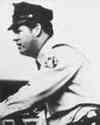 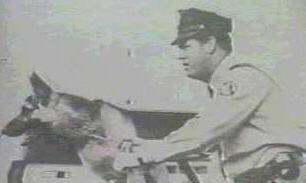

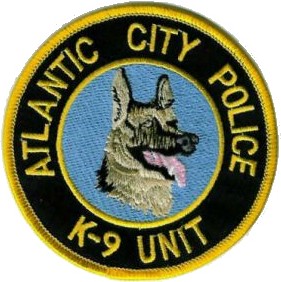
K-9 Officer John "Sonny" Burke, 26, was shot and
killed October 1, 1970, just minutes away from the end of his shift,
after being flagged down by a business owner regarding two suspicious
males at 2345 hours. As he approached the men one of them opened fire
with a sawed-off shotgun, fatally wounding him. One suspect was
immediately arrested and ultimately acquitted. The second suspect was
identified as James Cherry of Atlanta City who fled to Cuba.
Officer Burke had been with the Atlantic City Police Department in
New Jersey for 15 months.
The following day after
Officer Burke was killed he was scheduled to go on his honeymoon.
His K-9 partner "Thor" witnessed the
killing from the inside the patrol car. Officer Burke was survived by
his wife Marie.
The first suspect was acquitted.
The second suspect, James Cherry, was apprehended in 1990 and
sentenced to 15-20 prison for the murder of Ptl. John
"Sunny" Burke and four years for unlawful flight when he returned to the
U.S. after twenty years in Cuba. James
Cherry was up for parole in 2005.

  
|
